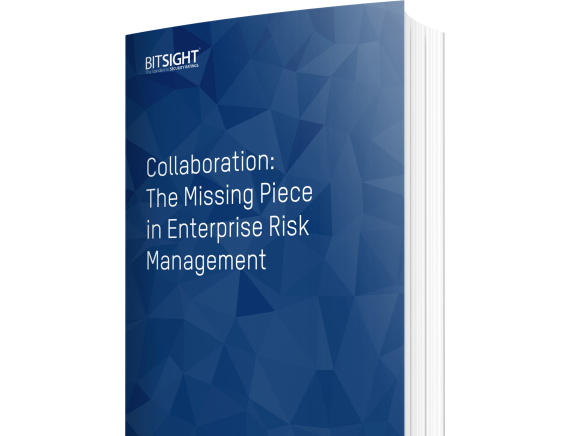In order to bridge the gaps between risk management and business decision making, ERM professionals must actively improve collaboration with key units inside and outside their organizations.
What is IT Risk Management?
Tags:

What is IT Risk Management?
IT risk management refers to the policies, procedures, and technologies that an organization adopts to identify, assess, and reduce the threats, vulnerabilities, and potential consequences that could arise if data is compromised or not adequately protected. Effective IT risk management is essential for safeguarding an organization's information, reducing potential disruptions, and ensuring business continuity.
In this article, we will explore how the classic risk equation can help prioritize IT risk management strategies, delve into best practices, and highlight the role of organizational leadership in setting up an effective IT risk framework.
Understanding the IT Risk Equation
To better understand IT risk management, it's useful to consider the classic equation for risk:
Risk = Threat × Vulnerability × Consequence
Each of these components plays a crucial role in determining the level of risk that must be managed:
-
Threat refers to the potential for an event to compromise data security, and is inherent in IT risk management. These threats can be intentional, such as cyberattacks or malware, or unintentional, such as accidental data leaks. Organizations must also consider threats posed by their vendors, who may inadvertently expose the organization to risk.
-
Vulnerability represents the gaps or weaknesses in an organization's defenses. One way to picture this is by comparing the security of sensitive documents stored in a locked safe versus documents on an open network. Understanding vulnerabilities includes knowing where weaknesses exist and how they can be exploited. Identifying and addressing these vulnerabilities is key to reducing the overall level of risk.
-
Consequence is the potential harm if a threat exploits a vulnerability, namely a cyberattack. Consequences can range from financial and reputational damage to legal ramifications. The value of the data being protected will also determine the severity of the consequences, whether it’s intellectual property or personally identifiable information (PII). When determining risk, it’s important to ask what might happen if that data is compromised.
Why is IT Risk Management Important?
IT risk management is vital because data is the lifeblood of many organizations. If data is compromised, it can result in severe financial loss, legal penalties, reputational harm, and operational disruption. Proper IT risk management ensures that potential risks are identified and mitigated before they escalate into major incidents. Given the evolving threat landscape, organizations that neglect IT risk management leave themselves vulnerable to both external and internal threats that can cripple operations.
A Common IT Risk Management Workflow
The IT risk management workflow typically follows these steps:
-
Define Objectives: Understand the business objectives and the risk appetite of the organization.
-
Identify Assets: Identify key information assets that need protection.
-
Assess Threats and Vulnerabilities: Perform a risk assessment to identify potential threats and vulnerabilities.
-
Develop Mitigation Strategies: Implement policies, procedures, and technical controls to reduce risk.
-
Communicate and Train: Ensure that all stakeholders understand the IT risk management policies and their role in maintaining security.
-
Monitor and Review: Continuously monitor risk and update risk management strategies as needed.
IT Risk Management Framework
An IT risk management framework provides a structured approach to identifying, assessing, managing, and mitigating risks within an organization. Frameworks such as NIST RMF (Risk Management Framework), ISO 27005, and COBIT help guide organizations in setting up comprehensive risk management programs by providing best practices, guidelines, and methodologies. These frameworks ensure a consistent approach to risk management, aligning the organization's risk tolerance with its broader strategic goals.
Properly Managing IT Information Risk
Knowing what IT risk management entails, as outlined by the risk equation and frameworks, is the first step. From here you can take the next critical step of establishing a clear strategy for information security and risk management, typically led by senior leadership. This strategy should set the tone for the entire organization.
Once executives define the IT risk management (IRM) strategy, it becomes the responsibility of the rest of the organization - from HR and legal to marketing and finance—to set policy into action. Policies, such as acceptable use policies, should be clearly communicated across the organization to ensure all employees understand their roles and responsibilities regarding IT risk management, as well as the severity of any risk management infractions
The IRM strategy also serves as a guideline for IT security teams for implementing technical controls, such as firewalls, intrusion detection systems, and multi-factor authentication, to prevent or mitigate the impact of a catastrophic data breach. Remember, data is the lifeblood of so many companies — so the task of managing information risk isn’t and shouldn’t be taken lightly.
Vendor Risk Management
To mitigate third-, fourth-, and nth-party risk, vendor risk management is crucial. Organizations must collaborate with vendors, suppliers, and other critical partners to ensure they have robust information security measures in place. A single weak link can jeopardize the entire supply chain, making vendor risk management a critical component of IT risk management.
Relationship Between IT Risk Management and Enterprise Risk Management
IT risk management is a subset of enterprise risk management (ERM). While ERM focuses on all types of risks that could impact an organization, including financial, operational, strategic, and reputational risks, IT risk management specifically deals with risks to information technology and data security. A successful ERM program should integrate IT risk management to ensure all digital risks are considered alongside other business risks. In doing so, organizations can achieve a more comprehensive understanding of their risk posture and take a holistic approach to managing threats.
Common Issues with IT Risk Management
-
Lack of Visibility: Many organizations struggle to maintain visibility over their IT environment, particularly in large or distributed networks. This makes it challenging to identify potential vulnerabilities.
-
Underestimated Threats: Some organizations underestimate threats, believing their systems are adequately protected. This can lead to a false sense of security.
-
Inadequate Resource Allocation: IT risk management requires the right tools, personnel, and budget. Insufficient investment can lead to gaps in security and unaddressed vulnerabilities.
-
Siloed Approaches: IT risk management must be integrated across departments. Siloed efforts can lead to inconsistent risk practices and policies, increasing overall risk.
IT Risk Management is Everyone's Responsibility
IT risk management is not solely the responsibility of IT or security teams. It requires a holistic approach involving all members of an organization. Senior leadership plays a pivotal role, but every employee must understand the importance of protecting information assets. The consequences of inadequate IT risk management - financial, legal, or reputational harm - can be severe. Organizations must foster a culture of security awareness, ensuring that everyone understands their role in managing IT risks and the potential impact of failing to do so.
IT risk management is a comprehensive effort to protect information assets by identifying, evaluating, and mitigating risks. It requires collaboration across the organization and strong leadership to establish effective policies and controls. By understanding the IT risk equation and using frameworks, organizations can create a structured approach to safeguarding data and maintaining business continuity.



